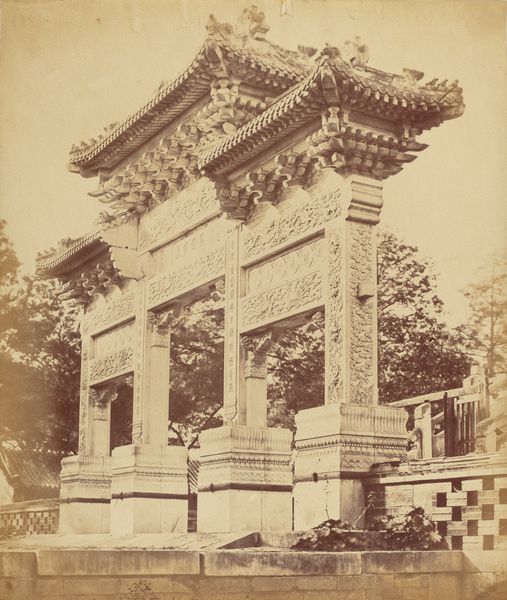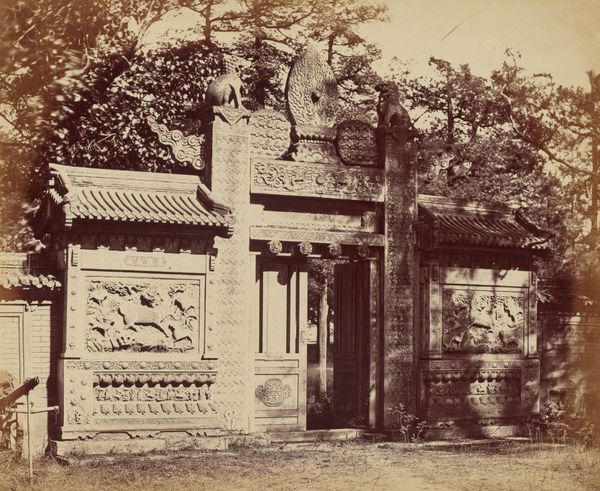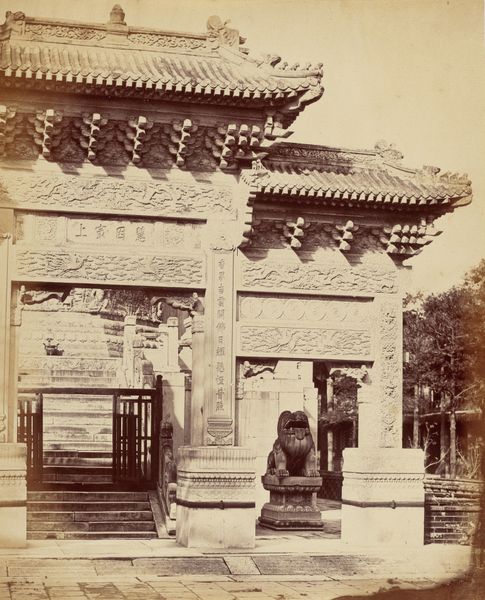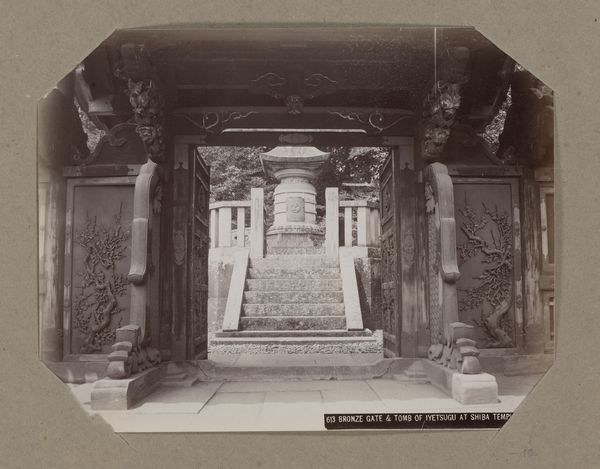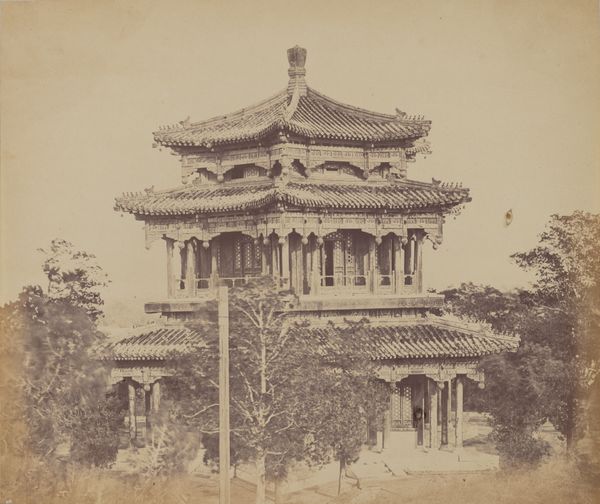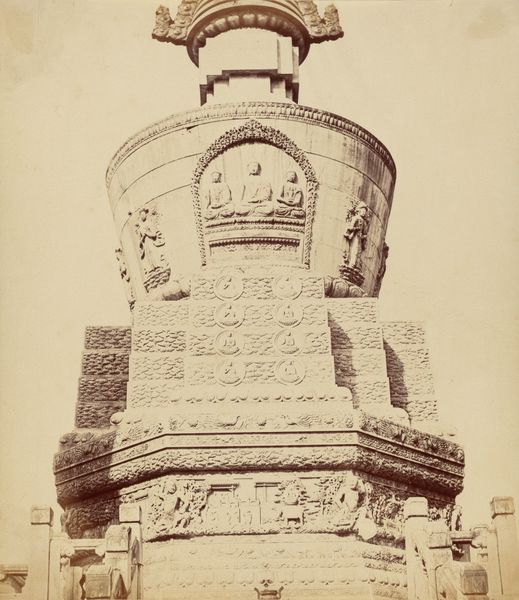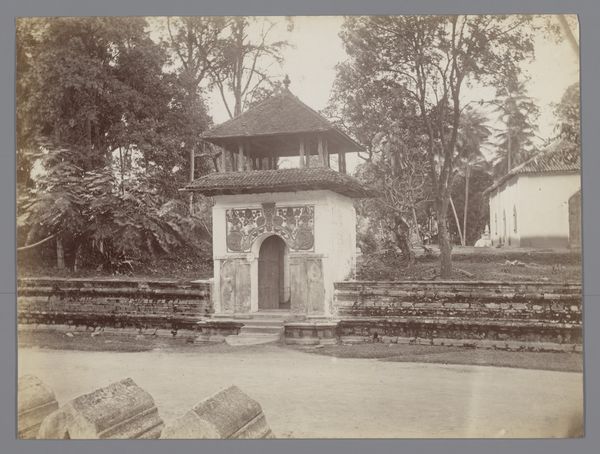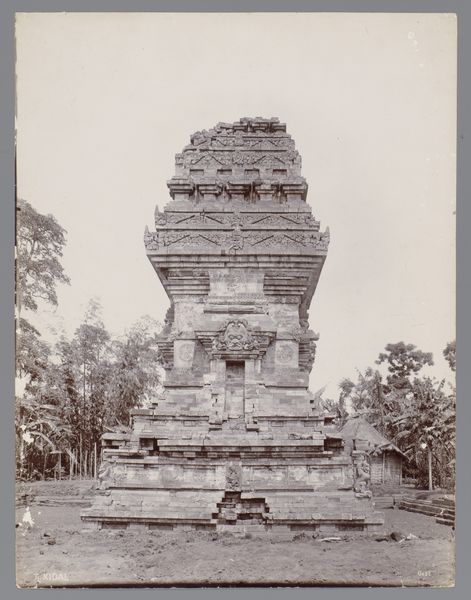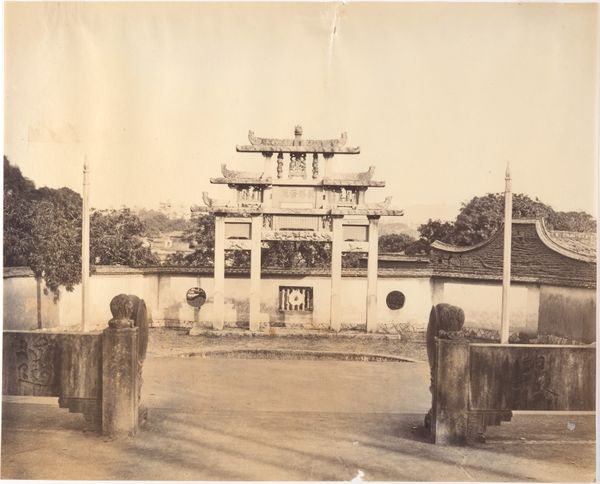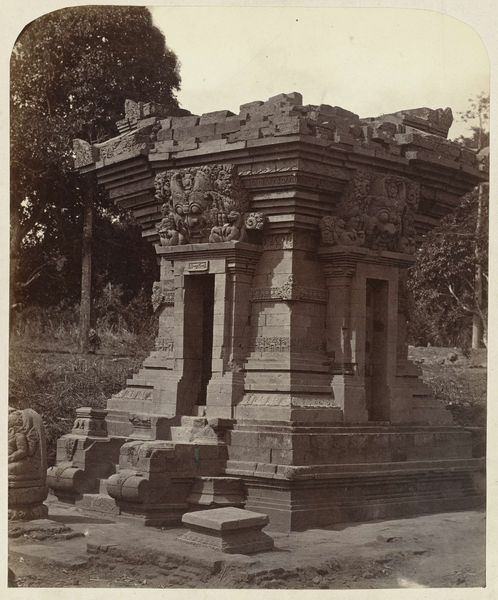
photography, albumen-print, architecture
#
asian-art
#
landscape
#
photography
#
orientalism
#
19th century
#
albumen-print
#
architecture
Dimensions: image: 29.1 × 24.6 cm (11 7/16 × 9 11/16 in.) mount: 30.9 × 25.2 cm (12 3/16 × 9 15/16 in.)
Copyright: National Gallery of Art: CC0 1.0
This photograph by Felice Beato shows a Tibetan monument in the Lama Temple in Peking, taken in October 1860. Beato captured this image using the collodion process, a popular photographic technique at the time. This involved coating a glass plate with a light-sensitive emulsion, exposing it in the camera while still wet, and then developing it immediately. The process demanded both speed and precision, reflecting the growing industrialization of image production and the labor involved in creating each print. The image itself depicts a monumental stupa, its surfaces adorned with intricate carvings and layered architectural details. The textures of the stone and the subtle gradations of light and shadow are meticulously rendered, emphasizing the monument's imposing physical presence. This demonstrates the skill traditions of both the original monument's makers, and Beato's own mastery of photographic chemistry. By focusing on the materiality of both the subject and the photographic process, we can appreciate how this image connects the histories of craftsmanship, cultural exchange, and early photographic technology.
Comments
No comments
Be the first to comment and join the conversation on the ultimate creative platform.
